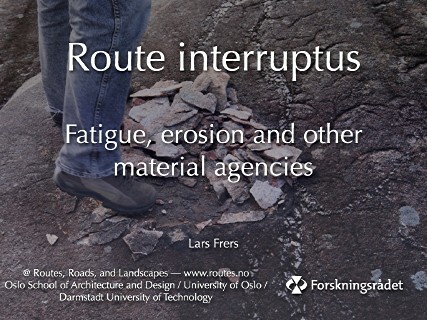Noch eine Vortragsankündigung: im Rahmen des dieses Jahr in Frankfurt am Main stattfindenden 35. Kongresses der Deutschen Gesellschaft für Soziologie werde ich in der Ad-hoc Gruppe Transitarchitekturen einige Ergebnisse meiner Studie zu Bahnhöfen und Fährterminals präsentieren. Der Rahmen passt hervorragend, da die Ad-hoc Gruppe an die architektursoziologische Arbeitsgruppe der DGS angeschlossen ist. Hier das von mir eingesandte Abstract für den Vortrag:
In Transitarchitekturen kreuzen sich die Bahnen einer Vielzahl unterschiedlicher Bewegungen. Einige ziehen sich durch diesen Ortstypus hindurch, wie der Transport von Personen und Dingen von einem Ort zum nächsten. Andere beginnen oder enden an diesem Ort, wie das mit dem Partner verbrachte Wochenende der Berufspendlerin. Wieder andere Bewegungen spielen sich an diesem Ort selbst ab, wie Bahnen des Reinigungsmobils über die polierten Böden oder wie das überwachte Auf und Ab der hier im Wortsinne Marginalisierten. All diese verschiedenen Bewegungen sind in unterschiedlicher Weise an die gebaute Räumlichkeit dieser Orte gebunden. In dieser materiell-körperlichen Gebundenheit – genau wie in der nicht davon zu trennenden ästhetisch-symbolischen Gegenwart – laufen diese unterschiedlichen Bewegungen aber keinesfalls unabhängig voneinander ab, jede in ihrer eigenen neutralen Sphäre, zugehörig zu einem je anderen, sich selbst reproduzierenden Bedeutungsgefüge. Das Gegenteil ist der Fall. In Transitarchitekturen treffen diese Bewegungen aufeinander, sie stoßen zusammen, prallen aneinander ab, stören sich und bringen sich gegenseitig in andere, manchmal unerwartete Bahnen.
In dieser Präsentation wird anhand von Videomaterial gezeigt, wie unterschiedliche Bewegungsmuster aufeinander treffen und wie – auf subtile oder auch offensichtliche Weise – ihre Hierarchie ausgehandelt wird. Anhand eines Vergleichs der Transitarchitekturen von Fährterminals und Bahnhöfen in Deutschland und Skandinavien wird darüber hinaus deutlich gemacht, wie unterschiedliche Transitformen unterschiedliche Zeitregimes hervorbringen, die sich durch eine jeweils spezifische Materialität und Symbolhaftigkeit auszeichnen. Darüber hinaus wird auch der Frage nachgegangen, welche Rolle lokale Eigenheiten und/oder nationale Einbettungen im jeweiligen Geschehen spielen und inwieweit diese sich über architektonisch-körperliche und/oder kulturell-performative Prozesse konstituieren.
 This week, I found myself in Manchester once more. I was called to port by the annual conference of the Royal Geographical Society (RGS–IBG), which might just be my favorite disciplanary organisation conference. Small enough to allow one to meet people frequently, diverse enough to collect many different approaches, and – in the fields of interest for me – open for risky submissions, non-standard formats and innovative presentations. In addition, you will usually find a session or two where people speak very openly about the difficulties of their field work – both on an intellectual but, even more important, also on an emotional level. I guess most of these kinds of sessions are convened and chaired by female researchers that are still in the first decade of their careers… hopefully this is not only an age-related thing but a generational change that continues even when people advance further in their academic standing.
This week, I found myself in Manchester once more. I was called to port by the annual conference of the Royal Geographical Society (RGS–IBG), which might just be my favorite disciplanary organisation conference. Small enough to allow one to meet people frequently, diverse enough to collect many different approaches, and – in the fields of interest for me – open for risky submissions, non-standard formats and innovative presentations. In addition, you will usually find a session or two where people speak very openly about the difficulties of their field work – both on an intellectual but, even more important, also on an emotional level. I guess most of these kinds of sessions are convened and chaired by female researchers that are still in the first decade of their careers… hopefully this is not only an age-related thing but a generational change that continues even when people advance further in their academic standing.